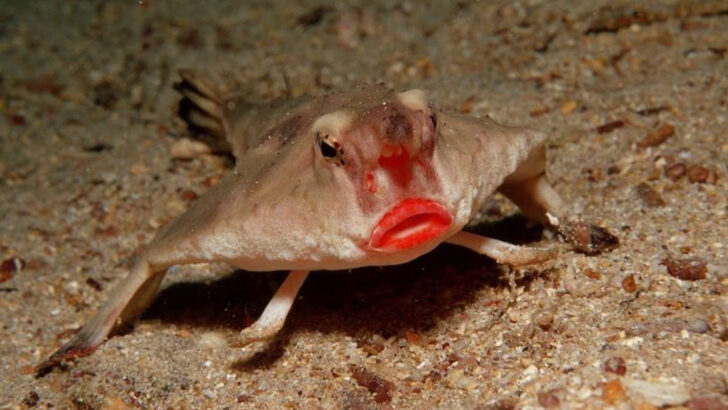The ocean is full of monsters—but not the ones you’re thinking of. Forget sharks and giant squid. The real weirdos are small, translucent, glowing, and sometimes shockingly cute. They float, twist, ooze, and pulse through the deep in ways that seem made for science fiction. One has a see-through head. Another farms bacteria on its own arms. And one just… spits out its guts when it gets scared. These aren’t your average fish. These are nature’s strangest survivors—creatures that bend the rules of biology just to stay alive. Let’s dive into the deep and meet 15 of the oddest animals ever to squish, swim, or sparkle their way through the sea.
Blobfish
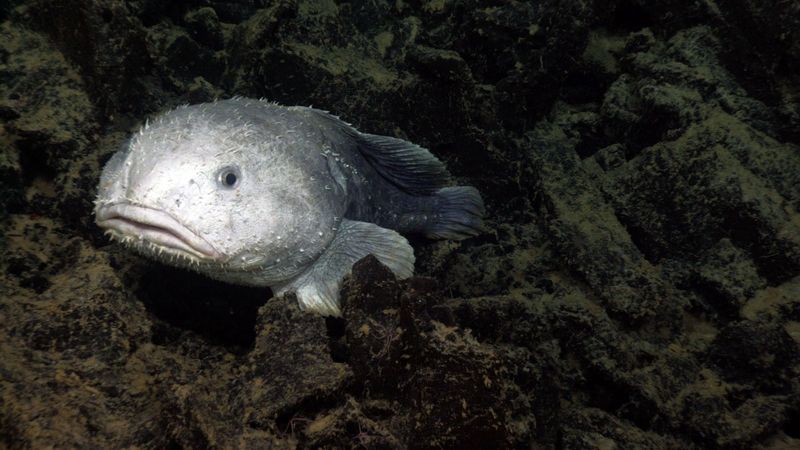
Blobfish, often considered one of the ugliest creatures, inhabit the deep waters off the coasts of Australia and Tasmania. Their gelatinous bodies are adapted to the high-pressure environments of the ocean floor. Without distinct bones, they maintain their shape thanks to the immense water pressure.
When brought to the surface, the absence of pressure causes them to become a saggy, gelatinous mass. Still, in their natural habitat, blobfish blend seamlessly with their surroundings. They are expert scavengers, feeding on whatever floats their way. Despite their appearance, they play a vital role in the ocean ecosystem.
Anglerfish
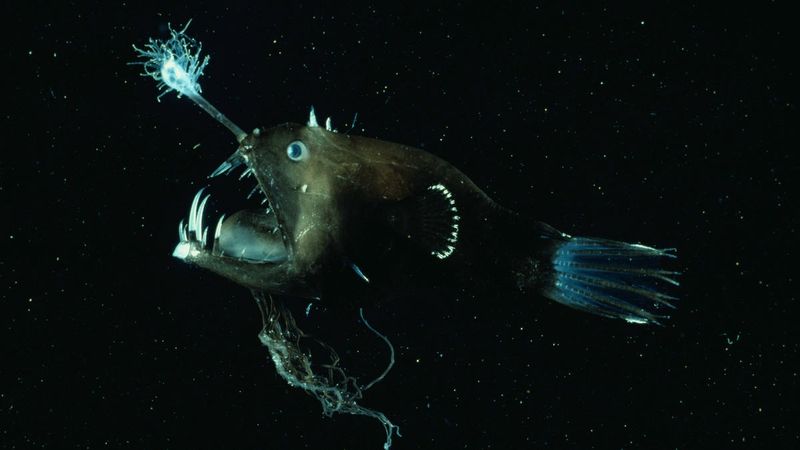
In the pitch-black depths of the ocean, the anglerfish uses its bioluminescent lure to attract prey. This eerie glow is produced by bacteria living in a special organ on its head. The anglerfish is known for its ferocious appearance, with razor-sharp teeth and a cavernous mouth.
These fish are masters of deception, using their lure to mimic the movement of small prey. Once their target is close, the anglerfish strikes with lightning speed. This predatory technique allows them to survive in a habitat with scarce food resources. Their unique adaptation exemplifies nature’s ingenuity.
Leafy Seadragon
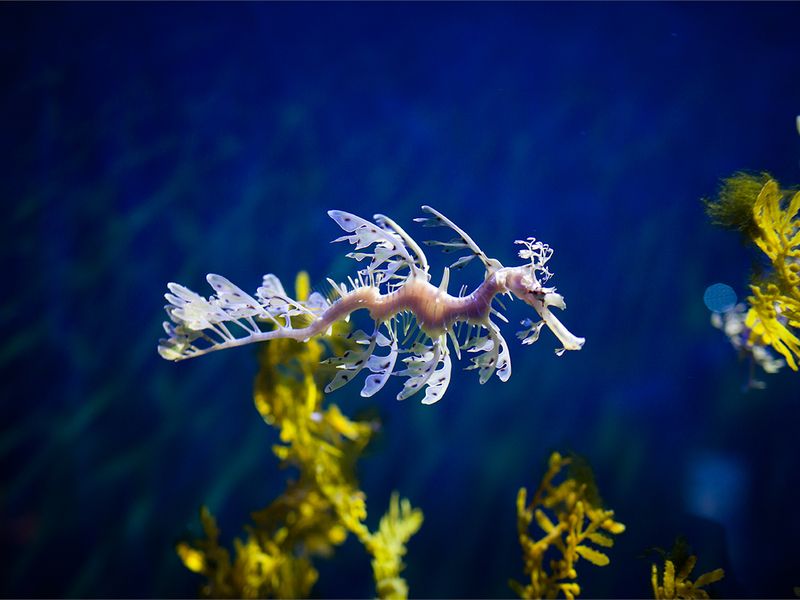
The leafy seadragon, a close relative of the seahorse, is a master of disguise. Its leaf-like appendages allow it to blend seamlessly into the seaweed and kelp of its Australian coastal habitat. This camouflage is its primary defense against predators.
In addition to its appearance, the leafy seadragon moves gracefully through the water, propelled by small fins that are almost invisible to the naked eye. Their diet consists mainly of small crustaceans and plankton. This fascinating creature’s ability to vanish into its surroundings makes it a true marvel of the sea.
Vampire Squid
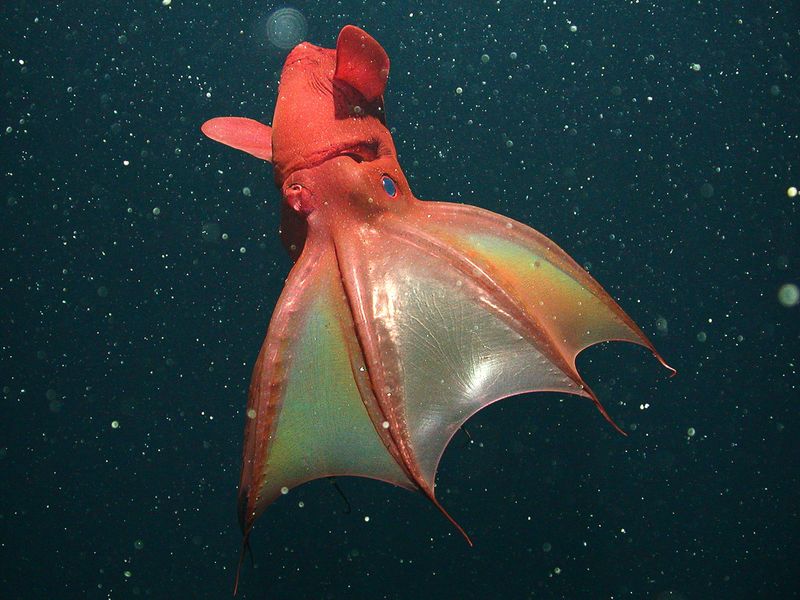
With a name as dramatic as its appearance, the vampire squid is a deep-sea enigma. Its cloak-like webbing and red-black coloration give it an otherworldly look. This cephalopod thrives in oxygen-depleted waters, thanks to its specialized gills and low metabolic rate.
Unlike its predatory relatives, the vampire squid feeds on “marine snow,” a mixture of organic particles that drift down from the upper ocean layers. By extending its arms and webbing, it captures these particles with ease. This unique feeding strategy allows it to survive where other squid cannot.
Goblin Shark
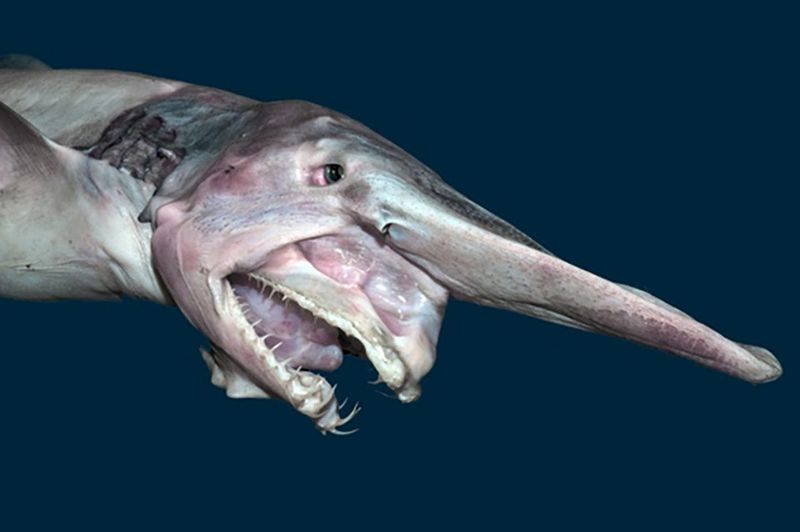
The goblin shark, often referred to as a “living fossil,” is a rare and ancient species. Its most distinctive feature is its elongated, flattened snout, which houses electroreceptors to detect prey. When hunting, the goblin shark’s jaw extends dramatically to snatch its target with precision.
This shark’s translucent skin reveals its blood vessels, lending it a ghostly appearance. Found in deep waters around the world, it rarely encounters humans. Its bizarre look and intriguing hunting method make it a unique member of the ocean’s predator community.
Yeti Crab
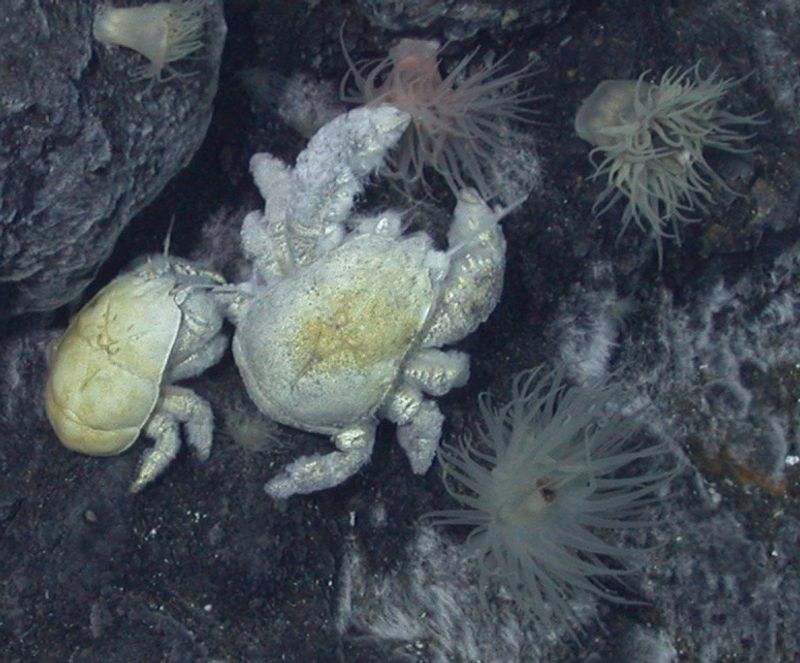
Discovered near hydrothermal vents in the South Pacific Ocean, the yeti crab is a creature of mystery. Its most striking feature is its hairy pincers, which are covered in filamentous bacteria. These bacteria may help detoxify the minerals emitted by the vents or serve as a food source for the crab.
Living in such a hostile environment, the yeti crab has adapted to withstand extreme temperatures. Its fascinating relationship with bacteria highlights the complex interdependencies in deep-sea ecosystems. The yeti crab’s unique lifestyle challenges our understanding of marine life.
Axolotl
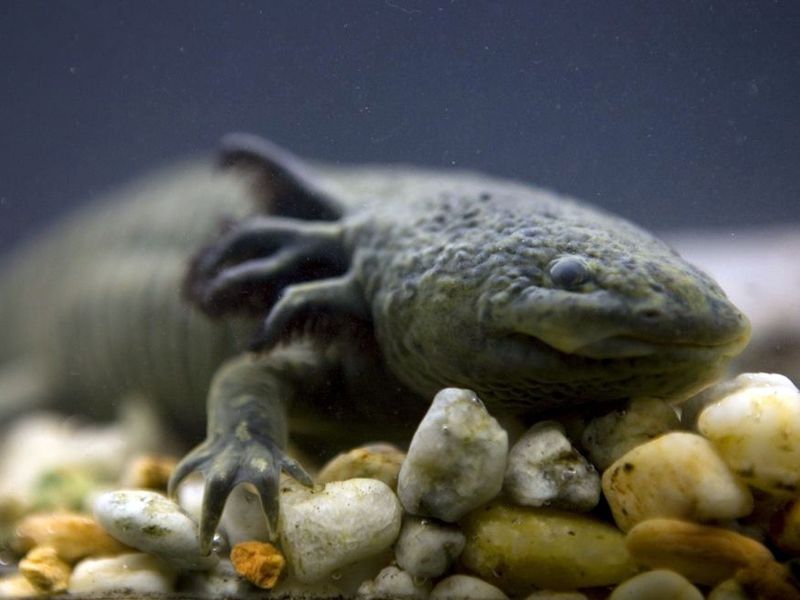
The axolotl, a mesmerizing amphibian, is native to the lakes of Mexico City. Unlike most amphibians, it retains its larval features throughout its life, including feathery external gills. This neoteny allows it to remain aquatic and fully reliant on water.
Axolotls have remarkable regenerative abilities, capable of regrowing limbs, spinal cord, and even parts of their heart. Their friendly appearance and unique biology make them popular in both scientific research and as exotic pets. These “water monsters” are critically endangered in the wild, highlighting the need for conservation efforts.
Mimic Octopus
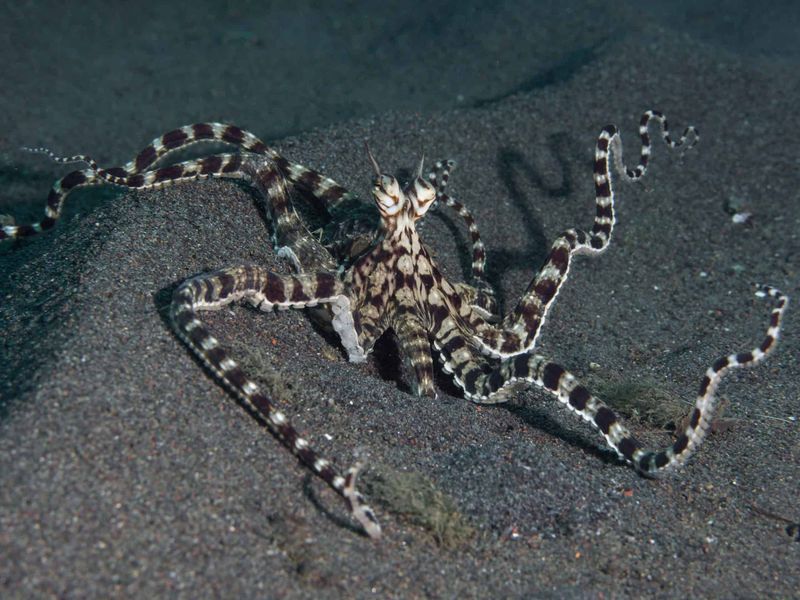
The mimic octopus is an extraordinary performer, renowned for its ability to imitate other marine animals. Found in the tropical waters of Southeast Asia, it can alter its shape, color, and behavior to resemble predators like lionfish, flatfish, and sea snakes.
This form of mimicry is not just for show; it serves as a defense mechanism against predators. By confusing potential threats, the mimic octopus can escape unharmed. Its intelligence and adaptability showcase the marvels of evolution and the complexities of underwater survival.
Sea Pig
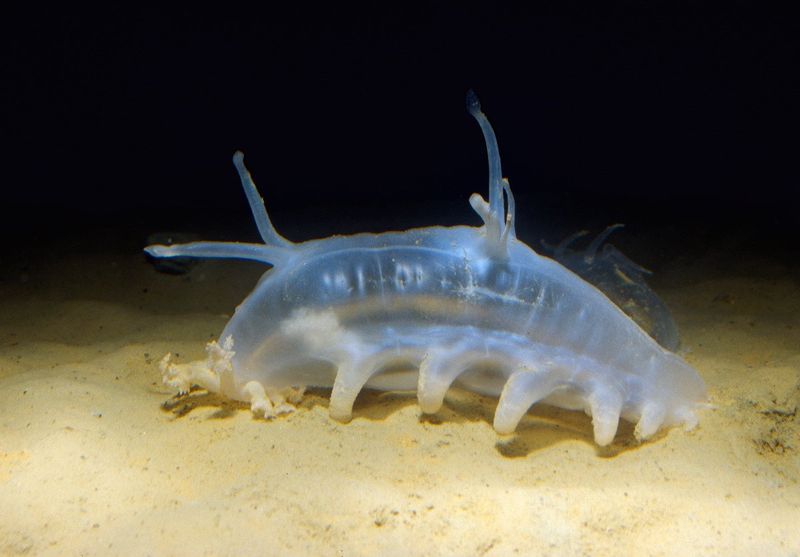
Sea pigs, unusual inhabitants of the ocean floor, are a type of sea cucumber. Their balloon-like appendages help them move along the sediment in search of food. Found in deep-sea environments worldwide, these creatures feed on organic particles that settle on the ocean bed.
Sea pigs play a vital role in their ecosystem by recycling nutrients and aiding in the decomposition process. Despite their strange appearance, they are crucial to maintaining the health of the ocean floor. Their presence reminds us of the hidden wonders lurking beneath the waves.
Salp
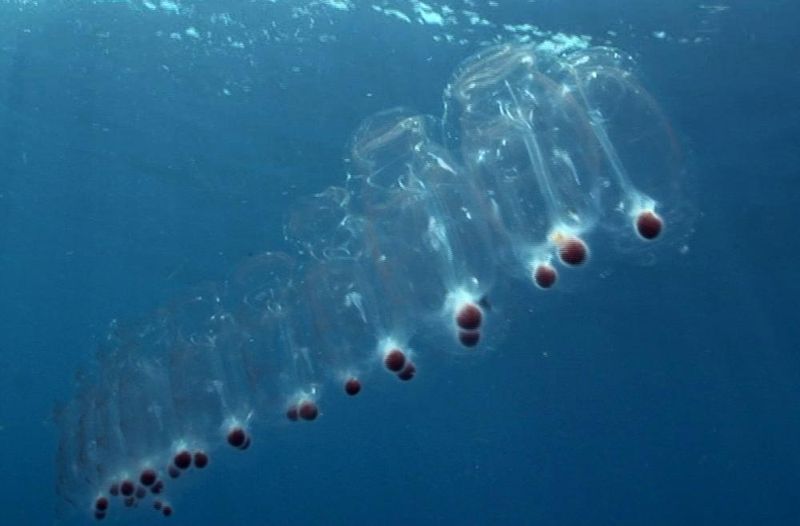
Salps, gelatinous sea creatures, often drift through the open ocean in long, translucent chains. They are filter feeders, consuming phytoplankton and microscopic particles suspended in the water. These creatures pump water through their bodies to propel themselves and capture food.
Salps are fascinating for their ability to form colonies, linking together to move as a single organism. This collective behavior enhances their chances of survival and reproduction. Their simple yet efficient lifestyle demonstrates the adaptability of life in the vast ocean.
Psychedelic Frogfish
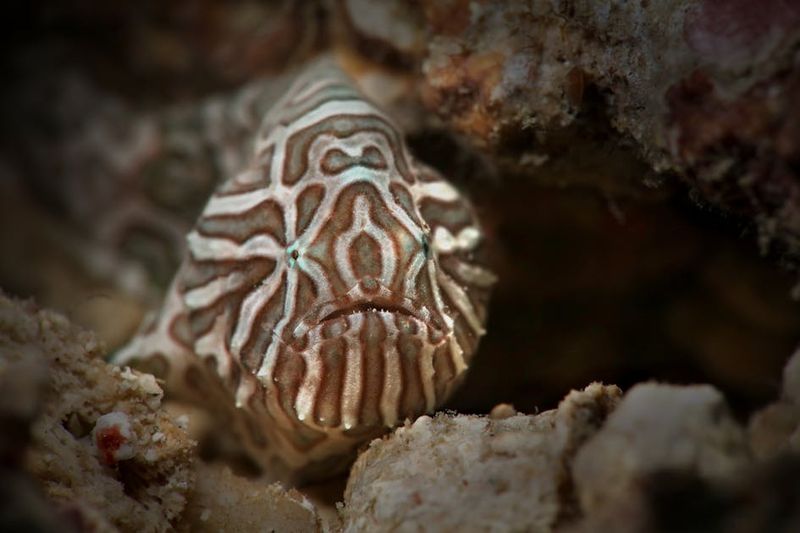
The psychedelic frogfish, native to the coral reefs of Indonesia, is a master of camouflage. Its vibrant colors and patterns mimic the surrounding corals and sponges, making it nearly invisible to both prey and predators.
This frogfish moves by “walking” along the ocean floor, using its pectoral fins. It possesses an extendable lure to attract unsuspecting prey. Once within reach, the frogfish strikes with incredible speed, swallowing its victim whole. Its unique appearance and hunting style make it a remarkable oddity in the underwater world.
Glass Squid
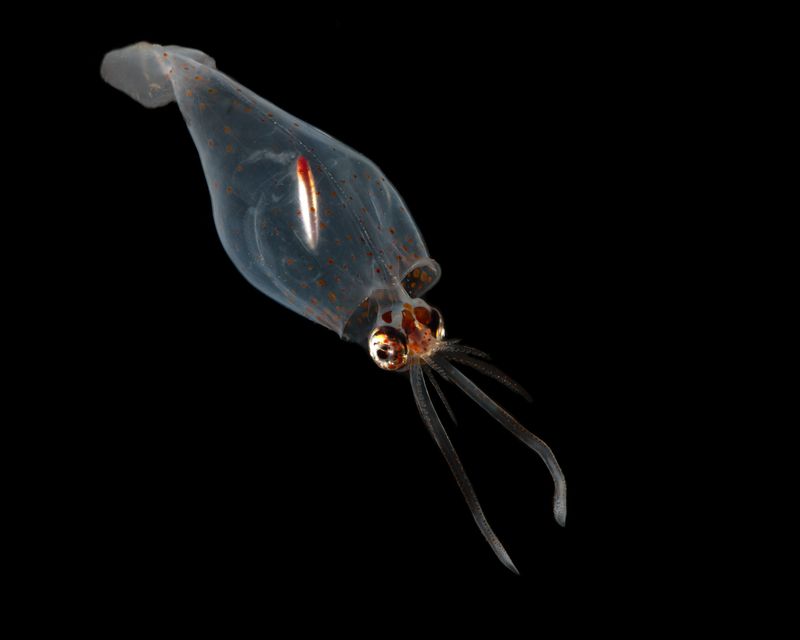
The glass squid is an ethereal inhabitant of the deep sea, known for its nearly transparent body. This adaptation helps it evade predators in the dimly lit ocean depths. Its internal organs are visible, giving it a delicate and ghostly appearance.
Glass squids have bioluminescent organs that they use to communicate and deter potential threats. These creatures are an example of nature’s artistry and the endless innovation of marine life. Their transparency and luminescence provide a glimpse into the hidden beauty of the sea.
Pelican Eel
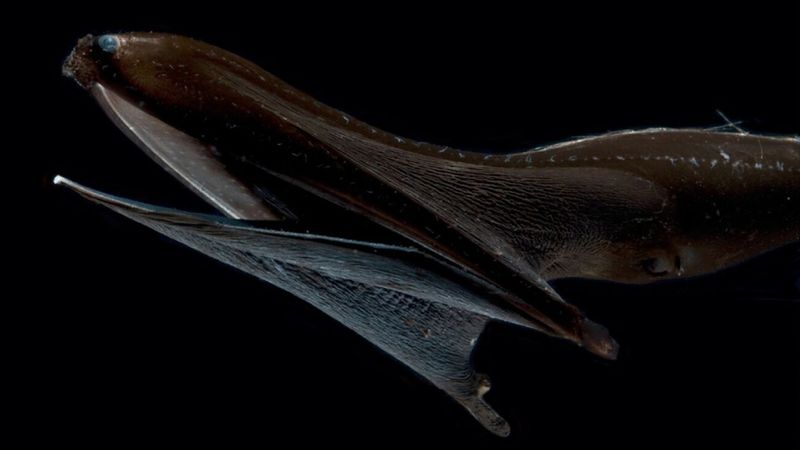
The pelican eel, also known as the gulper eel, is named for its massive, expandable mouth. This unique feature allows it to consume prey much larger than itself. Found in the deep ocean, its slender body and tail help it navigate its dark habitat.
Despite its fearsome appearance, the pelican eel is a solitary and elusive creature. It relies on its bioluminescent tail to attract prey in the pitch-black waters. This remarkable adaptation demonstrates the extreme diversity and survival strategies of deep-sea life.
Red-Lipped Batfish
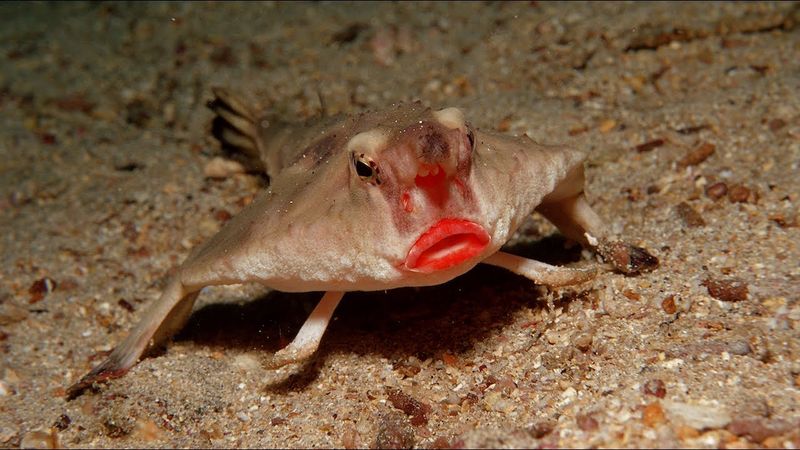
The red-lipped batfish, residing near the Galápagos Islands, is known for its distinctive red lips. This fish uses its pectoral fins to “walk” along the ocean floor, searching for small invertebrates to eat.
Its bright lips are thought to play a role in attracting mates, adding a splash of color to its otherwise muted appearance. Though it may seem awkward on land, its walking ability is perfectly suited to its underwater environment. The red-lipped batfish is an example of the ocean’s eccentric diversity.
Christmas Tree Worm
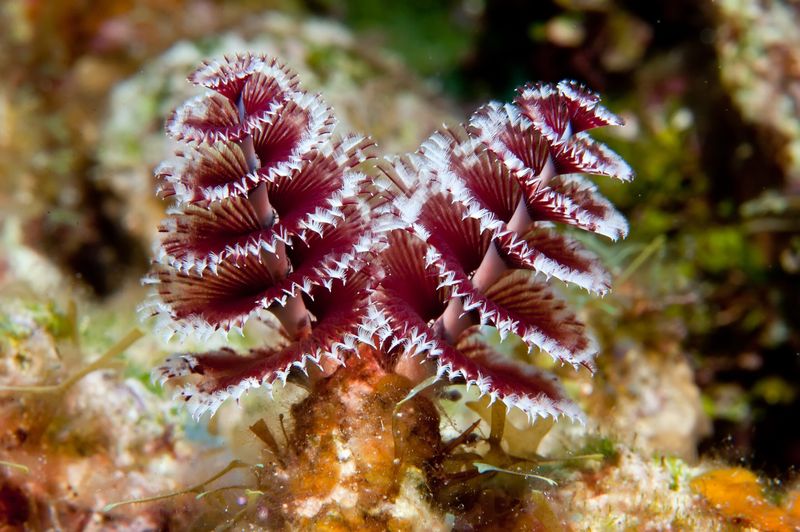
Christmas tree worms, named for their festive appearance, inhabit coral reefs around the world. Their spiral plumes, used for feeding and respiration, come in a variety of vibrant colors.
These worms retract quickly into their burrows when threatened, displaying remarkable speed and agility. They feed on microscopic plankton, filtering the water around them. Their presence enhances the biodiversity of coral reefs, contributing to the ecosystem’s overall health.

